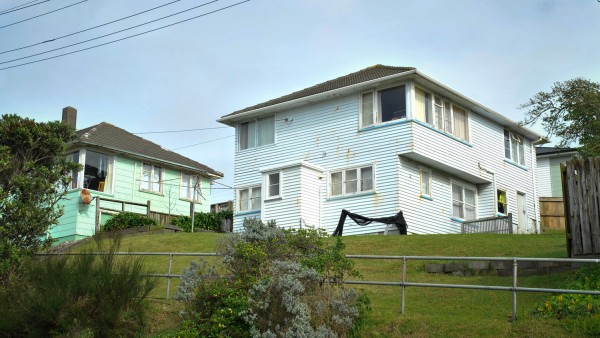This blog looks at solutions in the housing sector: energy efficient heaters; reducing avoidable home injuries and improving building standards.
This blog is part of the Public Health Solutions series looking at effective public health measures to reduce demand on healthcare quickly.
To keep well, everybody needs affordable, warm, dry, safe, secure homes with enough space to avoid crowding (a risk for infectious diseases such as rheumatic fever and COVID-19). Three ways improving houses can relieve pressure on the health system are home heating, reducing home injury hazards and building to better standards. Most of our existing houses are old and built to relatively low standards and numerous studies have tested ways to make these houses warmer and safer. Children living in cold, damp houses are more likely to be hospitalised for acute respiratory conditions than children living in warm, dry homes. Once a child is admitted to hospital, they are more likely to be readmitted. Sadly, nurses and doctors are all too aware of these “frequent fliers.”
One way to prevent hospitalisation is to help families install an energy efficient heater. Energy costs have risen about 40% faster than other household costs over the past 20 years** and children’s bedrooms, often south-facing, are frequently unheated. An evaluation of EECA’s Warmer Kiwi Homes programme found that installing heat pumps into low-income families’ homes gave several benefits within weeks: increased average indoor living-area temperature (1.4ᵒC); and reduced relative humidity and CO2 concentrations. These improvements did not increase electricity use. There were net energy savings when outdoor temperatures were lower and during peak heating periods. Families reported improved health, comfort and wellbeing, replicating results in previous heating studies – significant reductions in hospital admissions, symptoms of asthma, days off-school, lower healthcare utilisation, and fewer visits to a pharmacist.
A second way to reduce hospitalisations is to reduce avoidable home injuries. Two studies found that intervening in homes with relatively low-cost improvements, such as installing handrails, improving outdoor lighting, and fixing the lifted edges of carpets, significantly reduced injury numbers. Fall injury rates were reduced by about 26% overall, and 39% for injuries specific to the home modifications. Injury-related costs fell by a third. Once the intervention measures are installed, the benefits accrue immediately. Benefit-cost ratios were even better for older people, and people with a history of fall injuries. In Māori households, annual fall injuries in the home were reduced by 31%. As well as reducing stress on the health system, increasing home safety can reduce inequality. The Accident Compensation Corporation could consider investing in household modifications for people at higher risk of falls to both reduce ACC costs and reduce stress on the health system.
A third way to reduce hospitalisations is to increase standards for new buildings and increase the building of affordable housing particularly for Māori and Pacific households, who have much lower home-ownership than Pakeha. We need to accelerate the building of near-zero energy, universal design housing. Near-zero energy housing requires very little energy to run efficiently and comfortably. Benefits include low-income households being able to live in healthy, comfortable and mana-enhancing temperatures while spending very little income on heating; with flow on benefits in reduced housing-related hospitalisations and energy-related carbon emissions, which in turn reduce climate change and related health consequences.
Universal design creates buildings that people with a wide range of abilities and at any stage of life can live in safely and well. Dwellings have corridors wide enough for wheelchairs to navigate, handles that are easy for arthritic fingers, and non-slip flooring. Such designs should reduce home injuries and ensure that older or less-abled occupants are able to live well in the community, reducing demand for residential care and enhancing quality of life.
Our current building standards are far from near-zero energy, and despite a “Building for Climate Change” programme, MBIE recently pushed back the deadline for housing to be built with more efficient insulation. While getting large numbers of buildings built to these standards will take many years, every one that is built has immediate health benefits for the occupants.
*Author details: Philippa Howden-Chapman, Helen Viggers, Caro Fyfe and Michael Keall are all based in He Kāinga Oranga/Housing and Health Research Programme, University of Otago, Wellington
**Calculated by HV using CPI data March 2022 from Stats NZ

